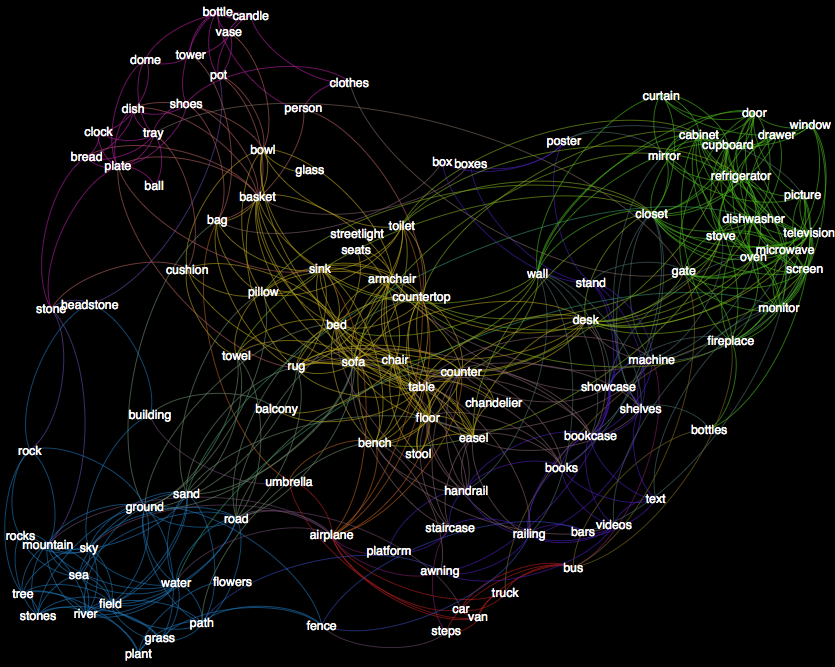Description
In
this project, we explore an approach to generating detectors
that is different from the conventional approach of learning
a detector from a large corpus of annotated positive and
negative data samples. Instead, we assume that we have
evaluated "off-line" a large library of detectors against a
large set of detection tasks. Given a new target task, we
evaluate a subset of the models on samples from the new task
and use the matrix of models-tasks ratings to predict the
performance of all the models in the library on the new
task, enabling us to select a good set of detectors for the
new task. This approach has three key advantages of great
interest in practice: 1) generating a large collection of
models in an unsupervised manner is possible; 2) a far
smaller set of annotated samples is needed compared to the
size of the training sets required for training from
scratch; and 3) recommending models becomes a very fast
operation compared to the notoriously expensive training
procedures of modern detectors. (1) will make the models
informative across different categories; (2) will
dramatically reduce the need for manually annotating vast
datasets for training detectors; and (3) will enable rapid
generation of new detectors.
System
Pipeline

During unsupervised hyper-training phase, a large library
of object detectors informative across categories is
generated. Their ratings on different detection tasks are
recorded to form a ratings store. For a new target task or
category, using ratings of a small probe set of detectors
on its input task with limited samples, recommendations
are made by collaborative filtering. A usable object
detector for this new task is thus rapidly generated as
single or ensemble of the recommended models.
Representative
Performance

Average
performance of ensemble PBC model recommendation with
varied input task size over 107 categories on the SUN
dataset. Ensemble of PBC models works consistently well as
the size of the recommended model increases, as shown in
the six curves. Using only a small number of images to
select models generated from out-of-domain dataset by
unsupervised hyper-training, it achieves comparable or
better performance to several strong baselines with
in-domain data by supervised training.
Model
Visualization

The
same model is informative across different tasks. For five
representative models (left to right), we show detection
on sample images (top to bottom). Note that the models
learned by unsupervised hyper-training are similar to
attribute detectors. For example, the first column
corresponds to all staircase -like objects with vertical,
horizontal, inclined, curved orientations (bottom to top).
This attribute-like behavior explains the generality of
the models for new input tasks.
Continuous
Category Space Discovery

A
continuous category space is discovered by shared models
across 107 categories on the SUN dataset. Although the
models are generated in a totally unsupervised manner on
PASCAL, it is interesting to show that visually or
functionally similar categories are naturally grouped
together: such as the green cluster of television,
monitor, stove, microwave, oven, dishwasher, blue cluster
of sea, river, field, sky, and red cluster of car, bus,
van, truck, etc.
Acknowledgements
This work was supported by AWS in Education
Coursework Grant award.
System
Pipeline

During unsupervised hyper-training phase, a large library of object detectors informative across categories is generated. Their ratings on different detection tasks are recorded to form a ratings store. For a new target task or category, using ratings of a small probe set of detectors on its input task with limited samples, recommendations are made by collaborative filtering. A usable object detector for this new task is thus rapidly generated as single or ensemble of the recommended models.

Average performance of ensemble PBC model recommendation with varied input task size over 107 categories on the SUN dataset. Ensemble of PBC models works consistently well as the size of the recommended model increases, as shown in the six curves. Using only a small number of images to select models generated from out-of-domain dataset by unsupervised hyper-training, it achieves comparable or better performance to several strong baselines with in-domain data by supervised training.

The same model is informative across different tasks. For five representative models (left to right), we show detection on sample images (top to bottom). Note that the models learned by unsupervised hyper-training are similar to attribute detectors. For example, the first column corresponds to all staircase -like objects with vertical, horizontal, inclined, curved orientations (bottom to top). This attribute-like behavior explains the generality of the models for new input tasks.

A continuous category space is discovered by shared models across 107 categories on the SUN dataset. Although the models are generated in a totally unsupervised manner on PASCAL, it is interesting to show that visually or functionally similar categories are naturally grouped together: such as the green cluster of television, monitor, stove, microwave, oven, dishwasher, blue cluster of sea, river, field, sky, and red cluster of car, bus, van, truck, etc.
This work was supported by AWS in Education Coursework Grant award.